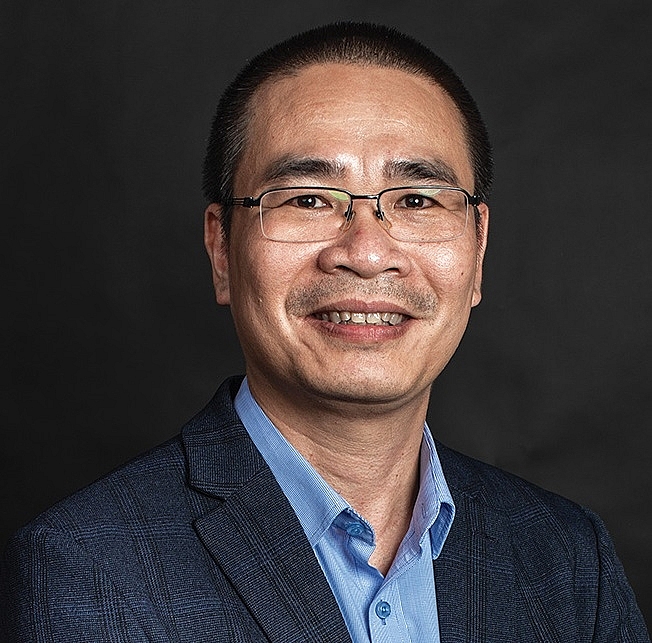Smart solutions to enhance urban flood resilience
 |
| Dr. Tran Van Giai Phong, an urban development specialist from the Swiss State Secretariat for Economic Affairs |
In Vietnam, the share of total population dwelling in urban areas has grown from 29 to 36 per cent between 2008 and 2018. By 2025, half of Vietnam’s population may dwell in one of the country’s 1,000 urban centres. Investments in drainage infrastructure capacities face difficulty keeping up with that pace.
Neither current nor future flood risks are effectively considered in urban planning. Unregulated growth of often illegal dwellings expands into natural flood plains. Sealed surfaces and densely compacted soil replace the naturally permeable landscape resulting in reduced natural drainage capacity, higher quantities, and an increased speed at which surface-runoff reaches and overloads drainage pipes. The result is serious flooding of urban areas, pollution, damage to habitat, preventable losses of human life, and contamination of groundwater sources.
Cities in Vietnam overly rely on traditional drainage systems to discharge surface-runoff. Often, when overflowing rivers concur with intense rainfall, this underground infrastructure does not have the capacity to drain the water in time. Inadequate execution of construction works, low quality materials, deteriorated and under-dimensioned pipe networks, and insufficient operation and maintenance efforts further amplify this situation.
As a result, areas with high population density, critical infrastructure such as hospitals and schools, and low-lying areas where the poor and vulnerable often dwell get flooded. In particular in the Mekong Delta, urban flooding will increase due to land subsidence, rising sea levels and more frequent intense rainfall events. Continuing rapid urbanisation further amplifies these challenges.
For instance, Rach Gia city in the Mekong Delta province of Kien Giang is significantly impacted significantly by tides. The city’s drainage system is designed to drain rainwater from the city into the sea, so all the large main pipes lead there. At times, however, tides are so high that ocean water flows back into the openings of these drain pipes and is pushed into the city. It then appears from street inlets and manholes and floods streets or entire residential areas.
What comes out of those manholes is smelly and black wastewater mixed with rubbish, dead rats, and other disgusting things, and the flooding is even more severe whenever it rains during high tide. Then, the sea water blocks the pipes and so rainwater cannot drain away. I have witnessed many residents in Rach Gia city staying away from that water to avoid catching a disease.
Therefore, according to our observation, implementation of sustainable urban drainage systems (SUDS) are expected to efficiently manage drainage of surface water in the urban environment. With the objective to minimise the sealing of surfaces in order to reduce surface-runoff and allow groundwater aquifers to refill, SUDS mimic nature and manage rainfall close to where it falls.
They can provide an alternative to, or addition to, traditional drainage systems where surface water is drained directly and quickly into underground pipes and conveyed to lower-lying areas.
Sustainable drainage delivers multiple benefits. Besides delivering high quality drainage whilst supporting areas to cope better with intense rainfall, SUDS can also improve the quality of life in urban spaces by making them more vibrant, visually attractive, increase biodiversity and resilient to change by improving urban air quality, regulating building temperatures, reducing noise, and delivering recreation and education opportunities. With those benefits, SUDS has better long-term cost-effectiveness compared to grey infrastructure solutions.
Co-financed by Switzerland, the Mekong Urban Flood Resilience and Drainage Programme has been at the forefront in promoting the SUDS concept here. Under this, SUDS demonstration projects were constructed in cities in the Mekong Delta using water absorbing landscape techniques called bio-retention systems. Those systems reduce runoff rates and volumes, and treat polluted runoff using engineered soils, geo-textiles, and vegetation. They proved effective in the interception and provided attractive landscape features.
The projects have demonstrated the effectiveness of different SUDS techniques in urban spaces and reduced the major gaps in the national sector policy and urban planning framework. The institutionalisation process flattened the ground for a widespread dissemination of SUDS techniques throughout Vietnam.
What the stars mean:
★ Poor ★ ★ Promising ★★★ Good ★★★★ Very good ★★★★★ Exceptional
Related Contents
Latest News
More News
- Honda launches electric two-wheeler, expands charging infrastructure (January 12, 2026 | 14:00)
- Vietnam striving to ease air pollution (January 09, 2026 | 14:41)
- Petrovietnam Gas awards first multi‑year LNG deal to Shell (January 09, 2026 | 14:38)
- Advancing the net-zero journey: Carlsberg Vietnam’s sustainability progress in 2025 (January 09, 2026 | 09:49)
- The green hydrogen and ammonia future for Vietnam (January 06, 2026 | 15:03)
- Green transition to close $20 billion annual investment gap (December 31, 2025 | 11:59)
- Australia contributing to Vietnam’s climate change responses (December 30, 2025 | 11:37)
- CME Solar strengthens position in Vietnamese renewables (December 30, 2025 | 11:21)
- Self-care signals shift towards sustainable healthcare (December 30, 2025 | 10:12)
- GreenYellow marks five years of clean energy growth in Vietnam (December 26, 2025 | 15:51)

 Tag:
Tag:





















 Mobile Version
Mobile Version